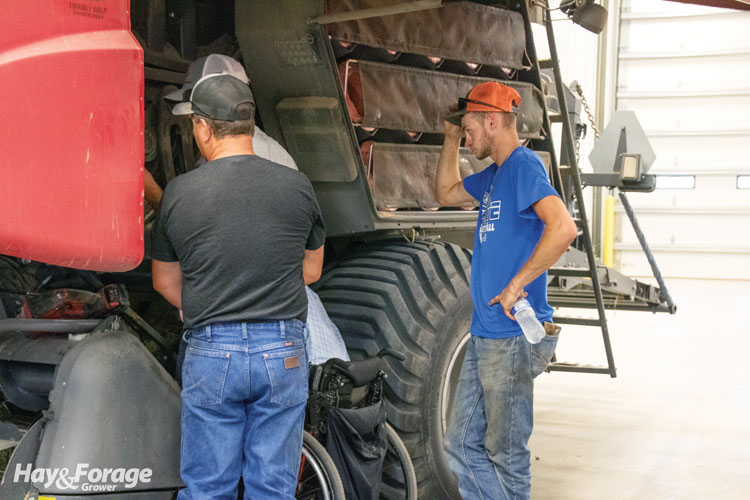Conversations with your dealer can pay dividends |
| By Adam Verner |
|
|
The author is a managing partner in Elite Ag LLC, Leesburg, Ga. He also is active in the family farm in Rutledge.  Developing a good rapport with your machinery dealer can be helpful when looking for used hay tools. As we look ahead to the next haymaking season, I’m sure some people have begun to accept the new norm for equipment costs. Then there are others who are still shocked at what equipment costs today compared to three years ago. Reality tells us that a higher average price for both new and used equipment has settled in and is not going away. Further, a new standard for warranty coverages is being offered by the manufacturer to spur used sales and ease you into the cost of a new unit. There is no wrong choice for buying new or used; it largely depends on your operation and budget. I want to run down a few different types of hay equipment and discuss what may be the easiest and most cost effective to purchase for a specific category of equipment. Advanced planning pays Starting with mowers and mower conditioners, these units have always trended toward customers preferring new iron over used in the past. This was primarily due to the fear of paying the high cost to repair a cutterbar if a breakdown occurs. I still believe this trend will continue, but the sticker shock will be real when you come back to the table to purchase a new mower! If you are not a large-acreage farmer, I would encourage you to start looking for a used unit a year or more in advance of when you are ready for your next purchase. Ask your salesperson to go out and find a two- or three-year-old mower from a respected farmer. Have the dealer trade for it, knowing they already have a handshake deal with you to purchase the trade. This deal should be a win for all three parties. You get a newer, more reliable mower without the new price, and the large-acreage farmer gets to begin with a new unit again. Tedders and rakes can be lumped together. Neither is overly complicated nor difficult to maintain. I believe that both categories can be purchased with confidence new and used, though you usually get what you pay for. The two products that I have the least amount of trouble selling used are large tedders and two-rotor rakes. However, finding these units as low-acre trade-ins are like unicorns; they don’t exist. Like all equipment over the past three years, the cost for a new large square or round baler unit has gone up tremendously. The same is true for used units. What hasn’t gone up is the longevity of these balers. Yes, they have improved in several areas, but chain and bearing life will vary drastically depending on the operation. For both types of balers, it’s important to work with your local dealership as was suggested for the mowers. For high-bale count operations, you should be able to work out a depreciation cost per bale with your dealer up front. These days, that value is $3 to $4 per bale on round bales or $4 to $6 per bale on big squares. Knowing these numbers can make budgeting for your next baler easier. Let’s say a new, big square baler costs $200,000 and you plan to put 10,000 bales on it, then trade it off. You can expect the depreciation to be higher if the dealer doesn’t already have a buyer for it when you trade it in. So, your cost per bale will most likely be closer to $6, whereas your payment was probably closer to $4.50 to $5 per bale. Now you are upside down and think you are getting a bad deal from your dealer on a trade-in. To avoid this position, have a conversation ahead of time and realize that your cost could drop a dollar per bale if you work with a flexible timeline for trading with the dealership. It’s advantageous for a dealership in today’s equipment market to presell or find homes for potential trades before they get to the dealership. Being open about your needs and budgeting with your salesperson can help you out immensely with future transactions. It will also ensure that if you can’t pencil out the price of a new unit, you can find the unicorn you want at the price and reliability you demand. This article appeared in the January 2024 issue of Hay & Forage Grower on page 26. Not a subscriber? Click to get the print magazine. |
